Copyright @ Andrew McIntosh
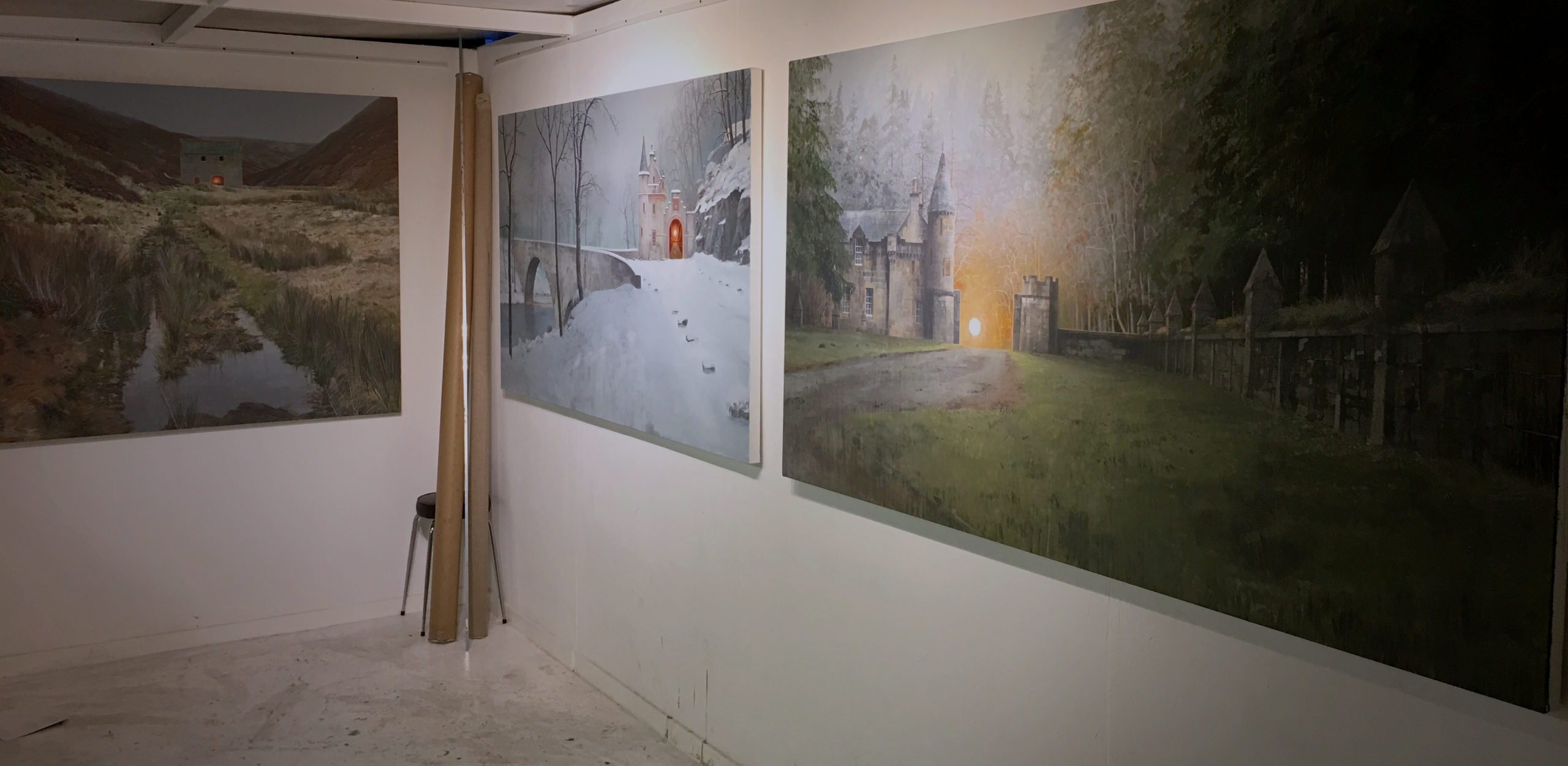
The Things I’ll Give To You
October 2017 at Beaux Arts London
Selected Works
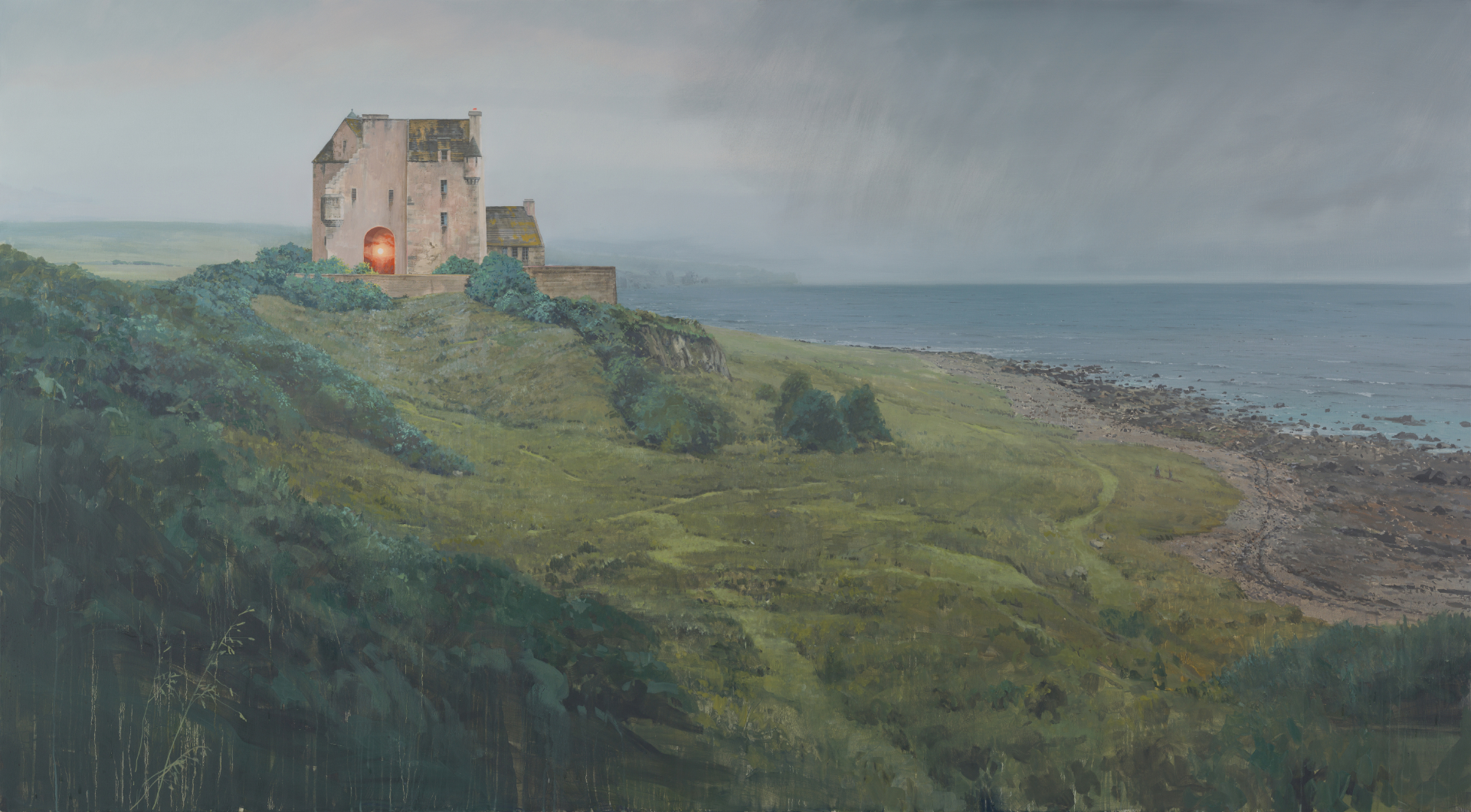
Living Like It's Far Away
oil on linen
200x110cm
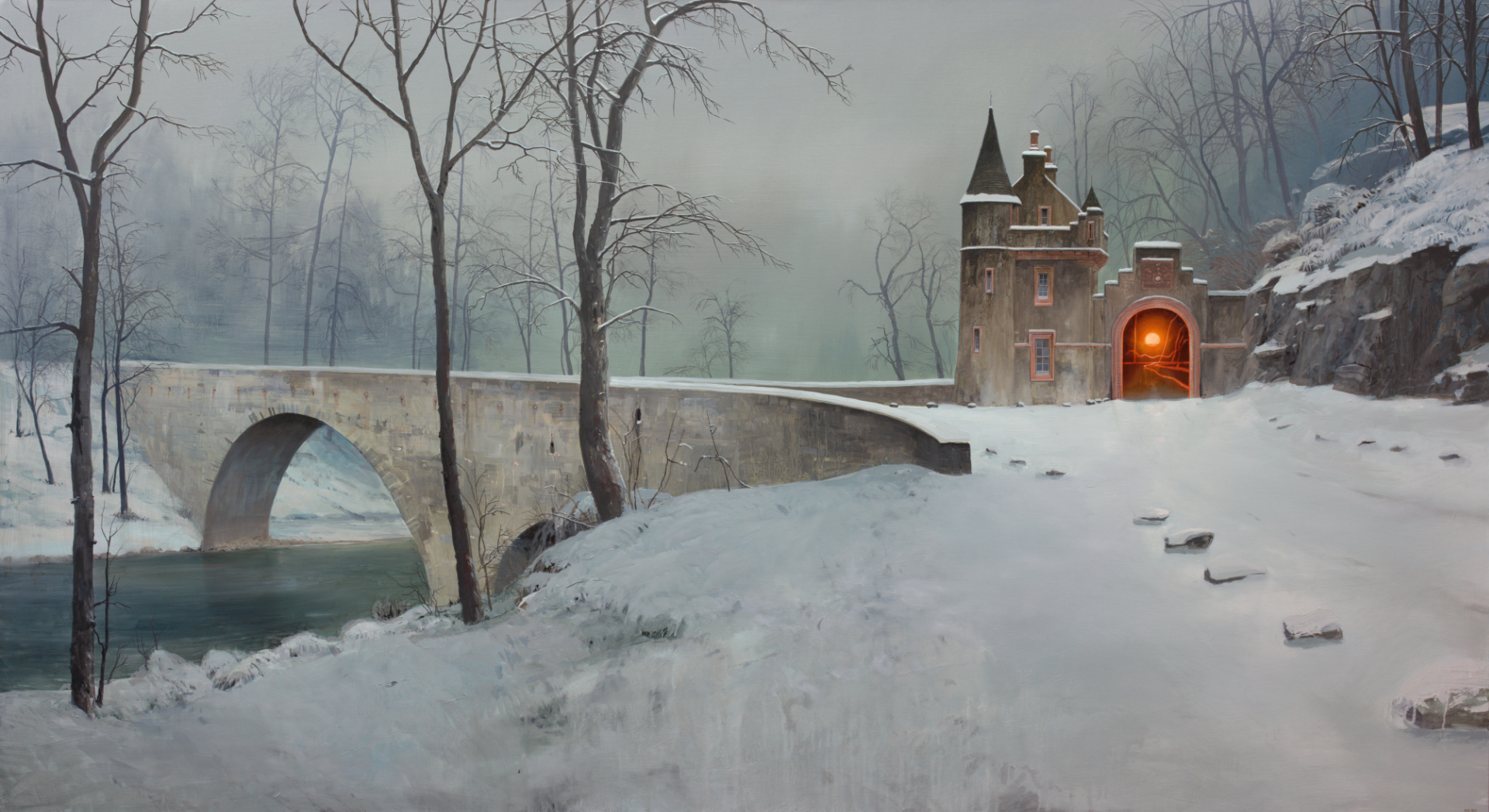
Trying Hard To Recreate What Had Yet To Be Created
oil on linen
200x110cm
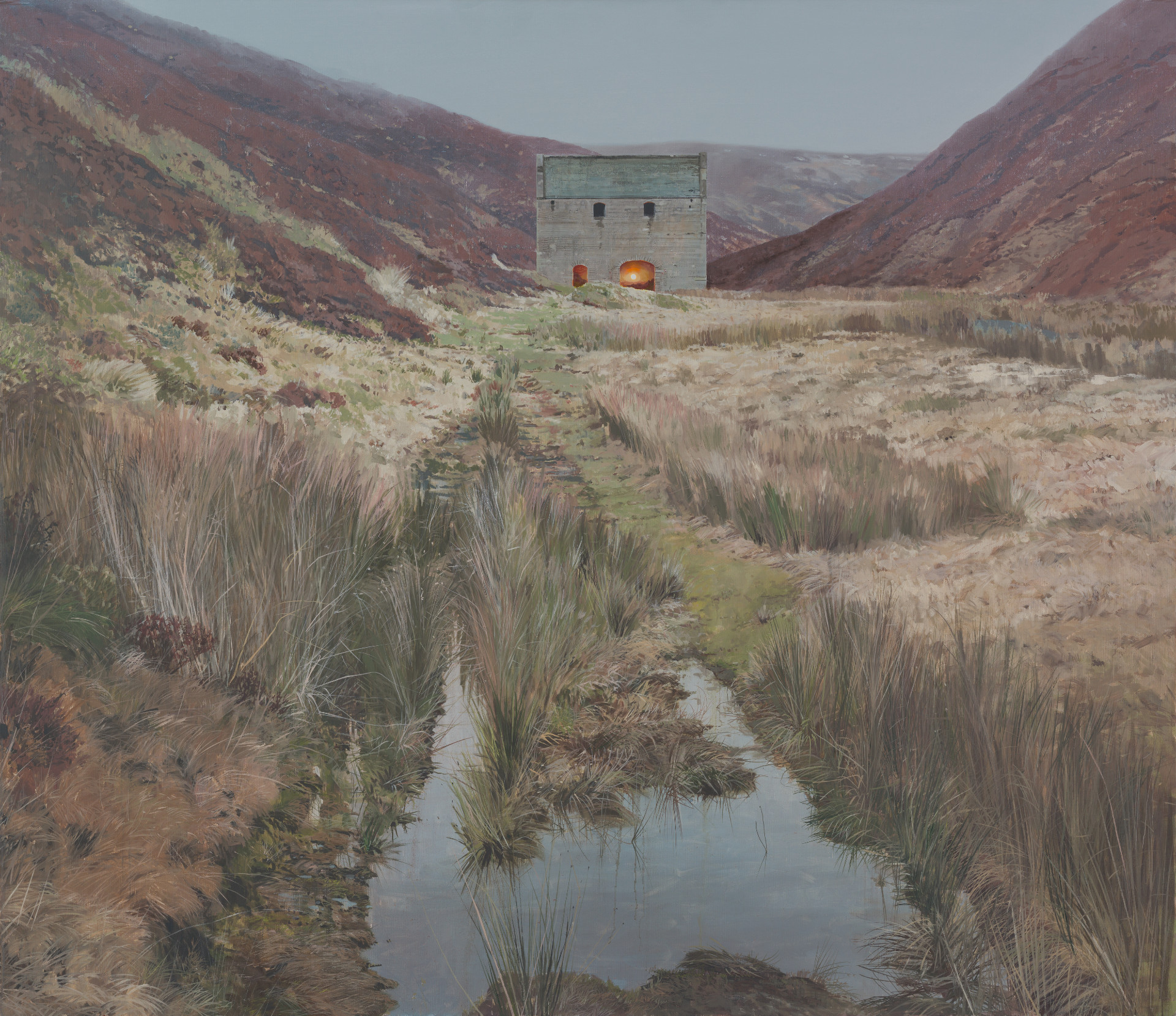
I Never Really Looked Before
oil on linen
150x130cm
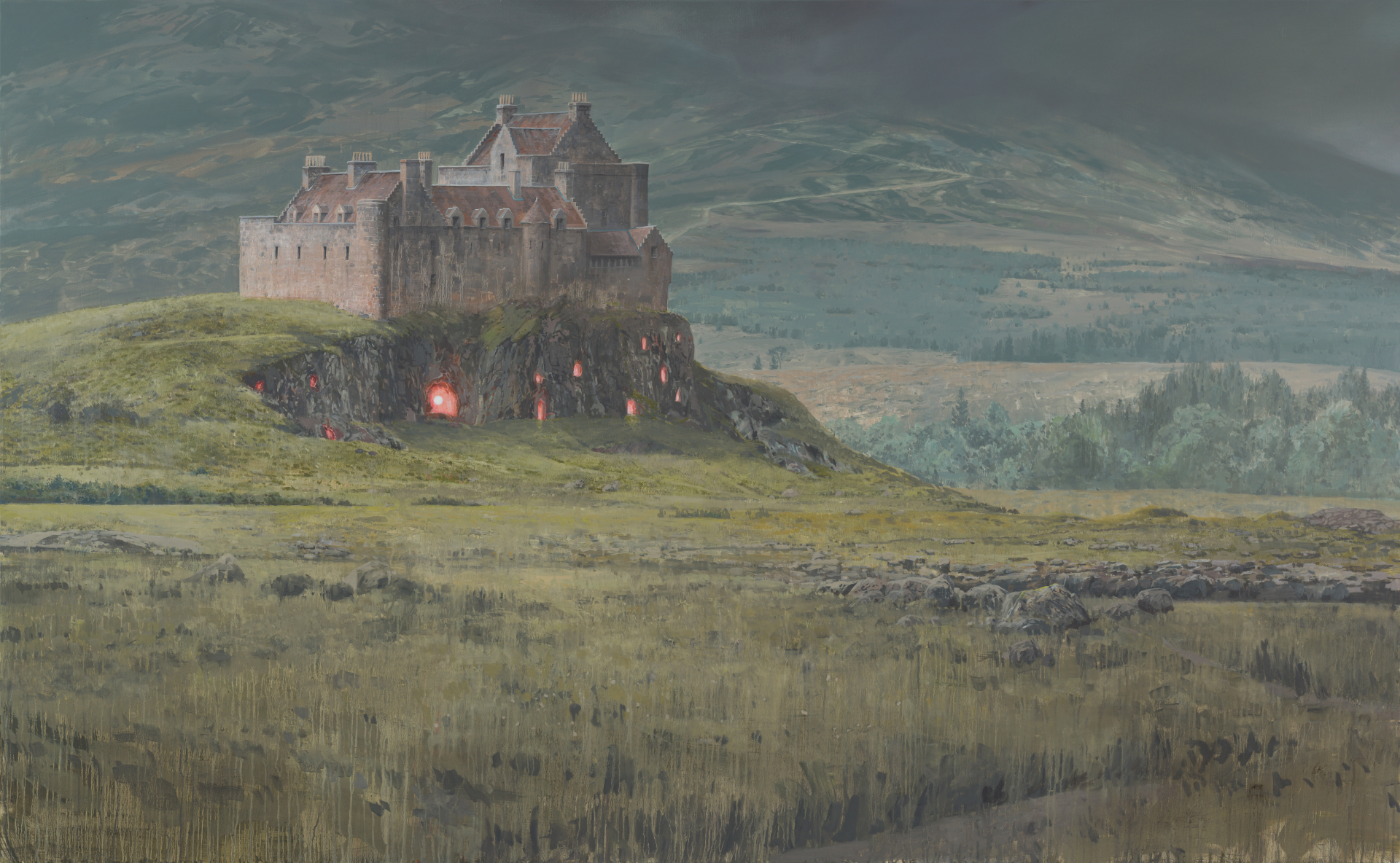
I Just Can't Hide it
oil on linen
210x130cm
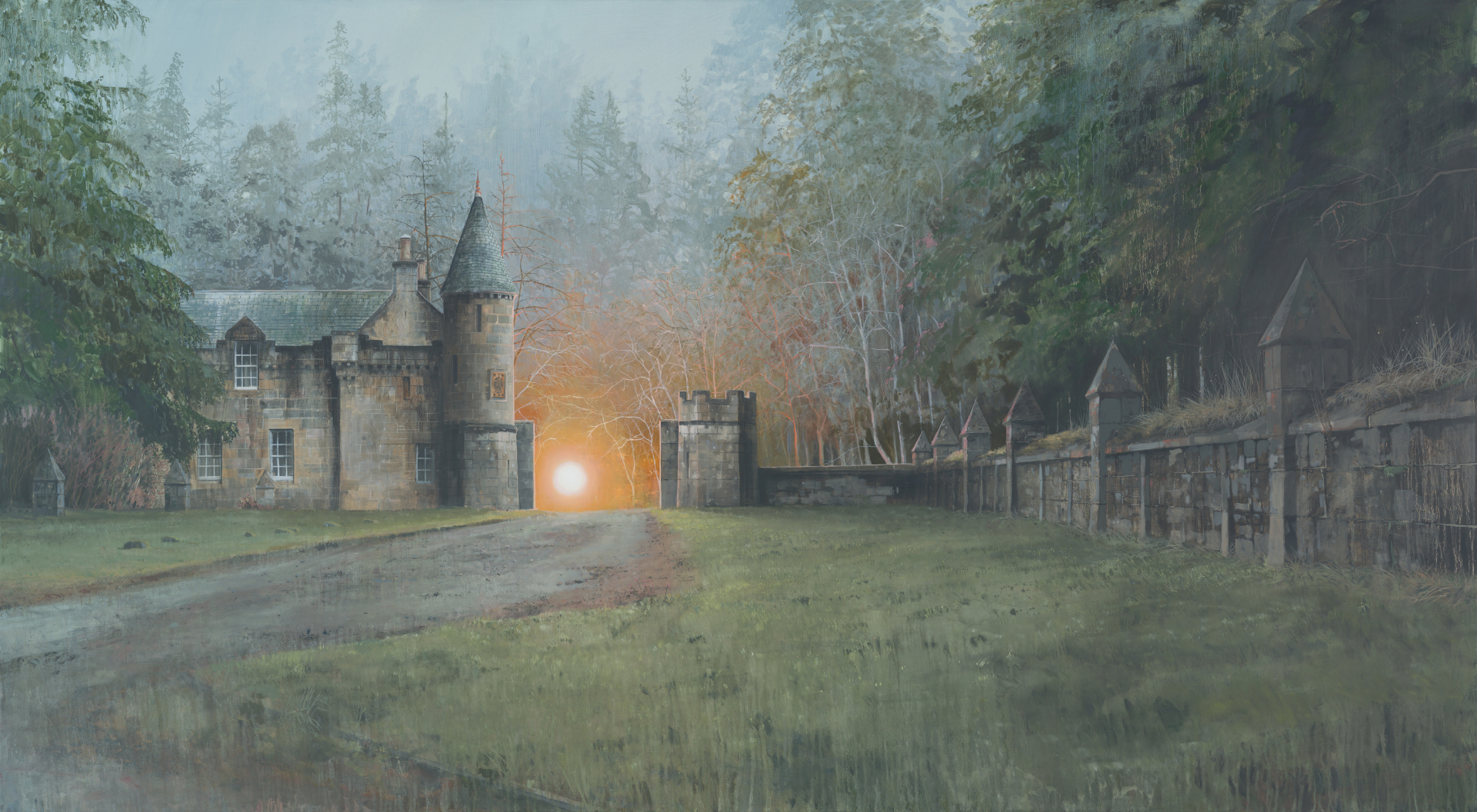
You Got that Hold Over Me
oil on linen
200x110cm
Andrew McIntosh by Richard Davey
In order to capture the full effect of a snowstorm at sea, it is said that JMW Turner had himself lashed to the mast of a ship. Like Ulysses, he wanted to experience the bewitching siren call of the natural world, to encounter both beauty and peril in one sublime moment. Whether it is true or not, this story captures the changing attitudes of Romantic artists to the natural world. They no longer saw the landscape as an incidental background, a possession to be recorded, or a site of nostalgia for a lost ‘golden’ age. Instead, wild, rugged and isolated locations were deliberately sought out as places of sublime encounter, where nature was alive with a sense of the divine. And even when they painted more picturesque subject matter, weather and lighting effects would be used to intensify the viewer’s emotional response, with the unremarkable elevated to the monumental by shafts of sunlight piercing dark, storm laden skies, or glowing sunsets melting everything into a numinous haze.
The Scottish landscape became emblematic of this Romantic vision, it’s diverse scenery the perfect embodiment of the sublime experience: storm tossed, moody and innately dramatic. For Andrew McIntosh, born and brought up in the Highlands, it was therefore almost inevitable that his first paintings should be filtered through the romantic impressions of artists such as Turner and Constable.
But, eventually, McIntosh came to see the high drama and overt emotionalism of this romantic vision as a siren call he wanted to avoid. Initially he stopped painting landscapes completely, turning instead to strange surreal men. But then he began a series of empty structures – dolls houses, industrial buildings, castles and caravans, which became reliquaries for famous works of art and precious objects. The partially exposed interiors of these strange, abandoned buildings, set in misty cold winter landscapes, drew the viewer into the painting without revealing too much of themselves. They intrigued without explaining; providing a point of visual interest that would both attract and repel, where, although the landscape was present, it was now employed as a subtle enhancer of mood rather than a dramatic subject.
But McIntosh, again became dissatisfied with the conceit. He wanted to insert something more vibrant into these secretive inner spaces – a living fresco that would animate the interior without overwhelming the sense of mysterious stillness that now characterised his paintings. The result was an internal sunset initially inspired by the 1960 film, The Sundowners. Interior rooms were no longer containers but portals to transport the viewer; the tiny, yet implicitly vast sunset breaking down the distinction between in and out, close and distant, small and large, whilst introducing intense summer heat into a scene of winter mists and cold. These sunlit landscapes, miniaturised and contained within a man-made setting, punctuated the paintings with a point of shimmering dissonance, allowing McIntosh to evoke the Romantic landscape without painting a Romantic landscape.
In his most recent paintings, however, McIntosh has allowed the landscape to come to the fore again. Although their focus may appear to be the silent, empty buildings that stand stoically at their centre, the landscape is no longer subservient. It fills our vision, shaping our encounter and trapping our gaze. McIntosh’s approach is now subtler and more low keyed, born from quiet, emotional introspection rather than overt expressionism. The bold, painterly animation of Turner and Constable replaced by the meditative contemplation of Caspar David Friedrich.
Unlike Friedrich, however, McIntosh’s landscapes are devoid of figures. Instead, the relationship between humanity and nature is represented by gatehouses, castles and industrial buildings, solid monuments to human endeavour standing amidst silent landscapes. Close toned in colour and seemingly unremarkable in detail, these vast tracts of heather, grass, sea, rock, and snow offer little for the eye to fasten onto yet are endlessly compelling.
To those used to images of the Scottish landscape that focus on visual drama, celebrating its rarity and emphasising its monumental qualities, this emphasis on the drab and unremarkable might seem strange. But McIntosh is drawn to the plain and ordinary – a Victorian lodge, a simple tower house, or an unremarkable castle set in scenery that is not immediately picturesque or inspiring – subjects that wouldn’t usually attract an artist’s attention. They are born from deep knowledge of the land, painted by an artist who wants to probe the limits of landscape painting, who knows that nature is much quieter than it is more usually portrayed, and that capturing the undramatic, ordinariness of nature, is more difficult than it may seem.
Yet McIntosh also knows that these eerily flat spaces need something remarkable to draw us in. So he has taken the secretive sunset from inside his caravans and placed them into these castles and lodges, allowing their shafts of intense golden orange light to pierce these monolithic, inanimate structures with a burst of vibrant energy. These sunsets are no longer vortices of spiritual energy overwhelming everything else. Instead, contained within granite walls, confined in caves and held between an avenue of trees, they have been restrained and restricted in their visual power. They have been transformed from vehicles of romantic drama into a cipher, allowing McIntosh to remind us of those rare moments of wonder we encounter in life, without destroying his hard won evocation of the everyday.
In the middle of McIntosh’s highly detailed paintings, these sunsets can seem artificial, an unsettling, surreal imposition into a naturalistic landscape. Their presence asks questions without offering an obvious answer. But in reality, McIntosh’s paintings are all artificial, with architecture frequently altered and settings changed, so that Duart Castle now sits amongst a sea of grass rather than water, whilst the Well of the Lecht has been transformed from a small industrial ruin into something more monumental and compelling.
McIntosh does this partly because he wants the viewer to ask questions: why this building, why this perspective, what has been changed, what added? For in leaving the answers unresolved, he can keep drawing us into these enigmatic worlds. But these alterations also allow McIntosh to represent more than the visual. They help him to evoke the full, sensory, embodied experience of standing in the landscape. Usually, painters represent what they see before them, a purely visual experience that doesn’t actually convey what it is to be there. But real experience is never monochrome and single sensory. It is embodied, filled with childhood memories and thoughts, cultural conventions and passed on traditions. Standing in or walking across the landscape we might have snatches of music playing in our head, or scenes from films, or memories of our childhood. And when we look around us, our eyes are never settled but constantly roaming, going backwards and forwards, leaping from near to far, only momentarily fixing and focusing, before moving onto the next thing that happens to catch our attention.
McIntosh subtly captures all this. Lyrics from songs or fragments of dialogue inspire his titles. Yet he always struggles to find just one, since the songs we hear in our heads and the scenes we replay in our minds are never fixed but a constantly changing soundtrack to our life shaped by our moods and experiences. Likewise, the contrast between detail and irresolution that defines these landscapes is not about naturalism or painterly conceits, but captures how we see: the constantly roaming passage of our gaze, darting backwards and forwards, jumping from near and far, moving seamlessly from unresolved areas of colour to intricate areas of detail such as a blade of grass or individual stones.
And if the texture of McIntosh’s paintings suggests the nature of seeing, then his alterations to ‘reality’ are not just painterly devices to create visual interest or to resolve a compositional problem, they allow him to suggest the filter of our memory, where what we remember is not always clear and trustworthy, but can be merged with other memories and with our dreams, so that what we think is real may not actually be so.
McIntosh’s paintings are therefore more than representations of the landscape, they are celebrations of embodiment, reminding us that we exist in the world as a selectively seeing, emotionally engaged, constantly changing human being.
